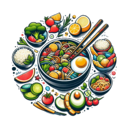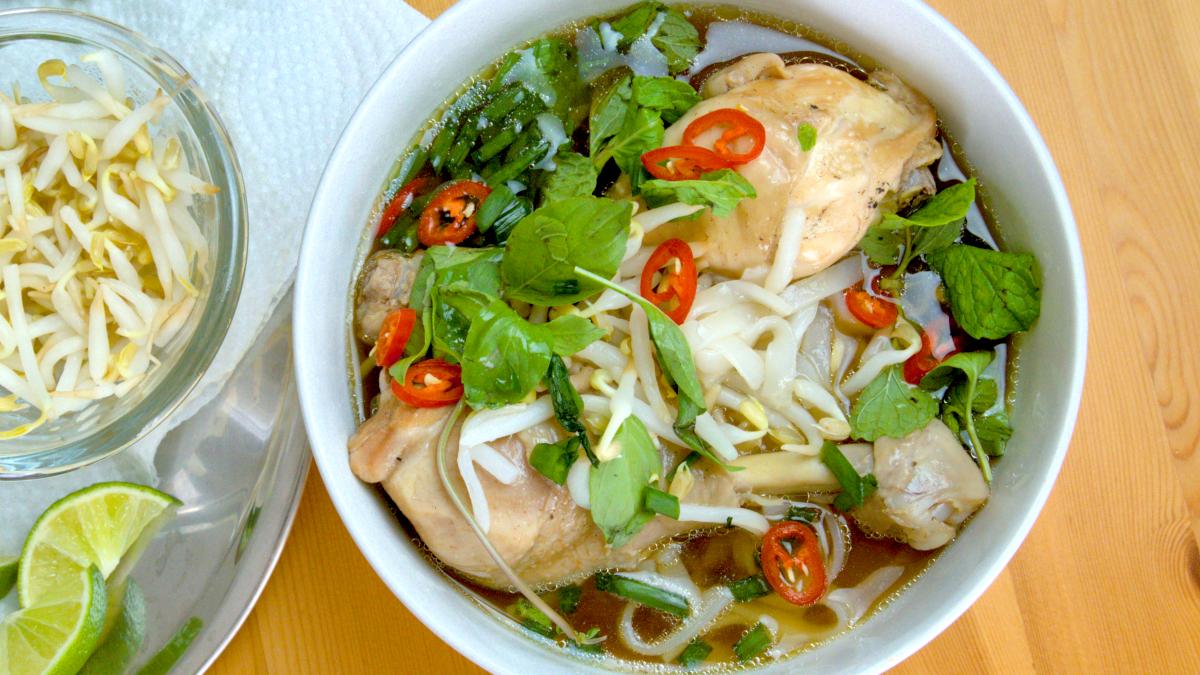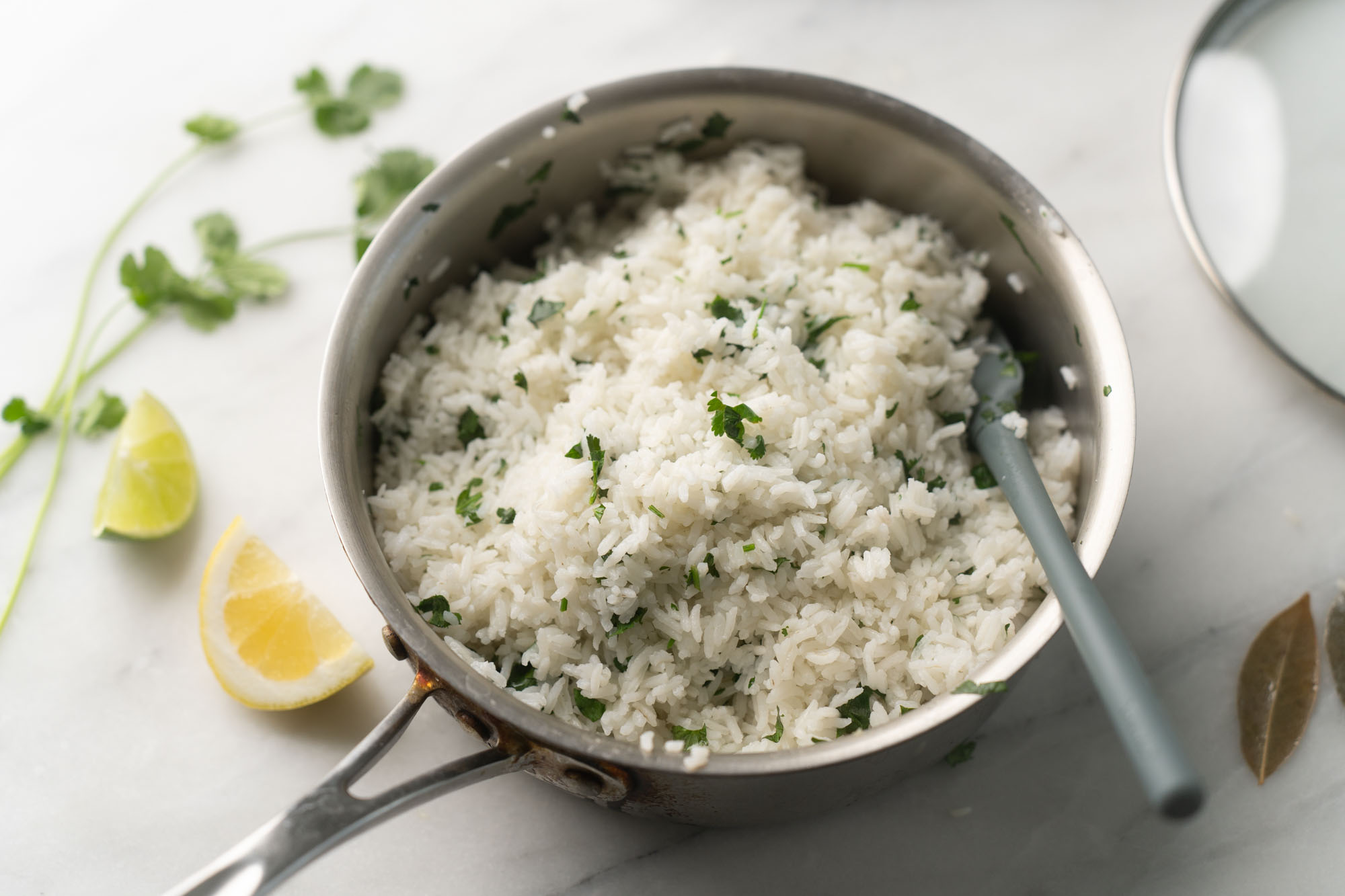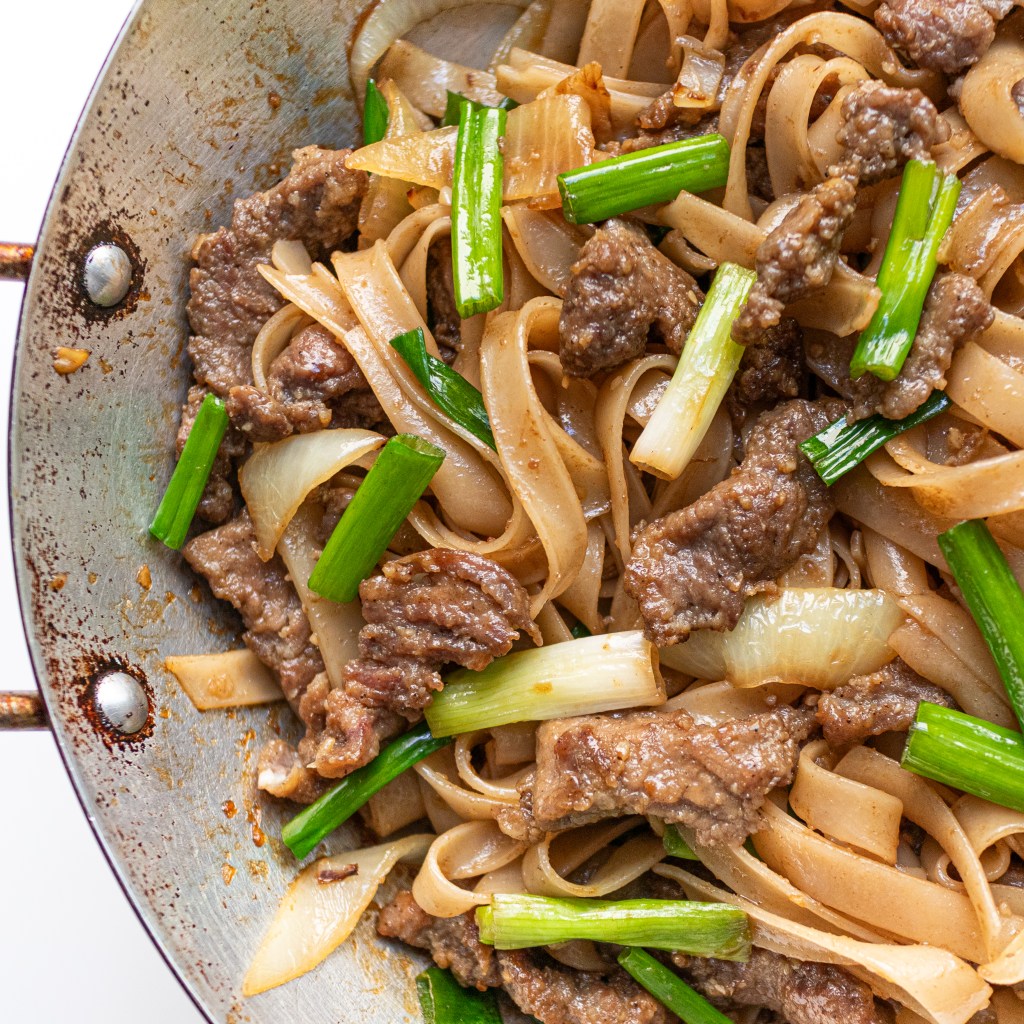This Vietnamese chicken noodle soup, known as pho ga, is a delightful alternative to the more popular beef pho (pho bo). With the help of a pressure cooker, you can create a delicious bowl of pho ga, complete with flavorful broth and tender chicken, in under thirty minutes. This recipe is a time-saver, as traditional pho typically requires several hours of simmering.
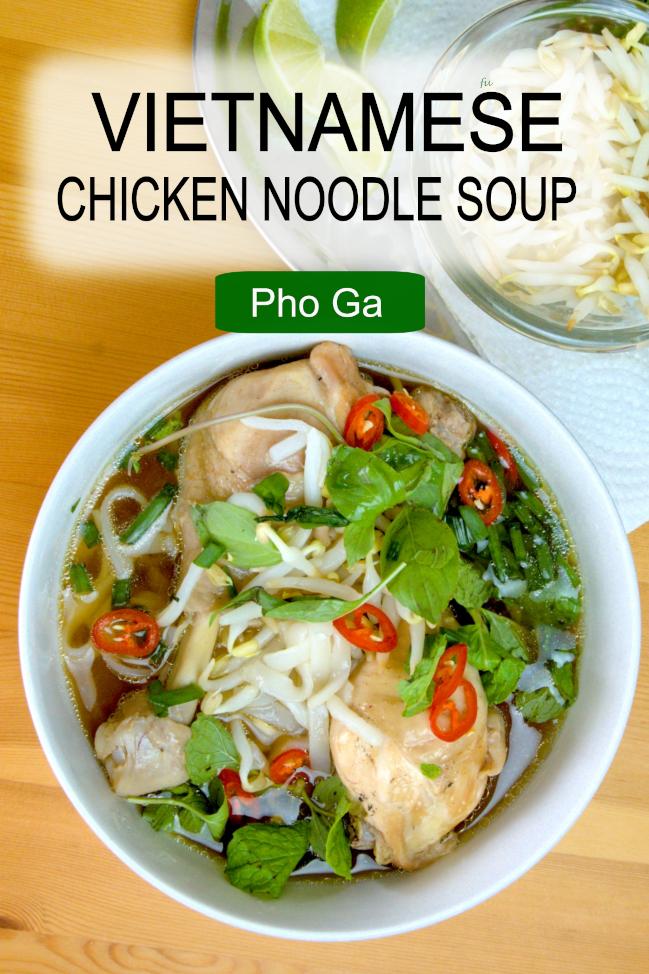
❓ What is Phở?
Phở is a traditional Vietnamese noodle soup that features a savory broth, rice noodles, and various meat toppings. Originating in northern Vietnam, it has been influenced by French and Chinese culinary traditions, ultimately becoming Vietnam’s national dish. The broth is typically made by simmering beef bones, spices, and sometimes chicken or beef for several hours, resulting in a rich, aromatic, and slightly sweet flavor. The rice noodles, known as “bánh phở,” have a soft, slightly chewy texture. Pho is often served with fresh basil, bean sprouts, lime wedges, and chili sauce on the side. There are numerous regional variations, and its popularity has spread worldwide.
Main Ingredients for Pho Ga (Vietnamese Chicken Noodle Soup)
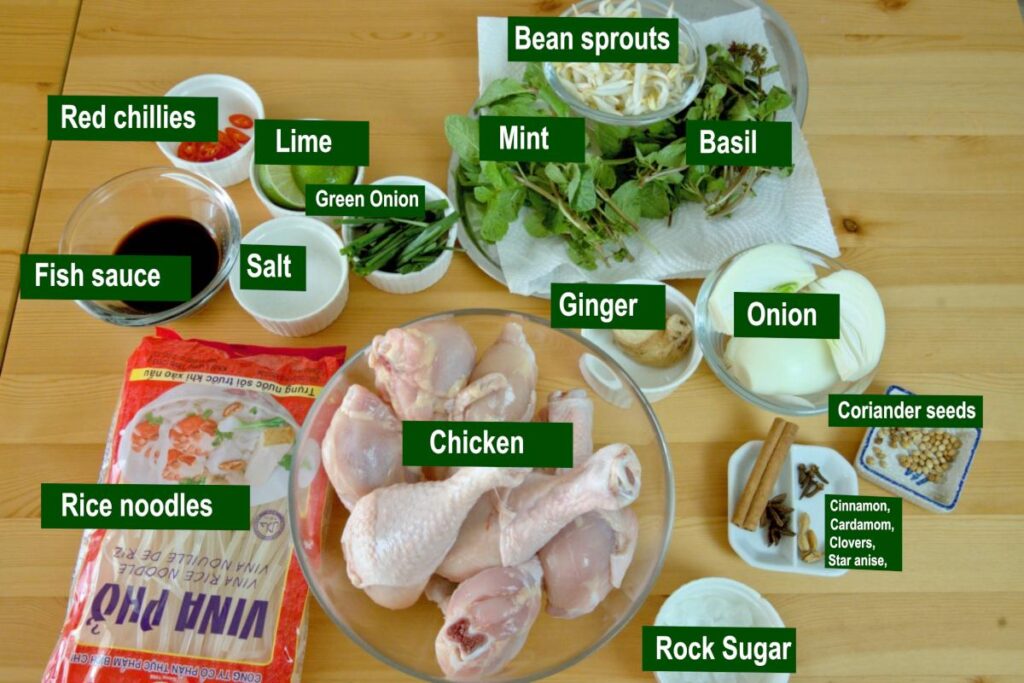
a. Chicken
The best choice for making chicken phở is a whole chicken, as it provides a rich and flavorful broth from a combination of bones, dark meat, and white meat. If the chicken includes innards and neckbones, it’s advisable to use them in the stock rather than discarding them.
If a whole chicken isn’t available, you can use any chicken parts you have on hand, such as wings, drumsticks, thighs, or breasts. Drumsticks are particularly flavorful and ideal for this recipe.
b. Seasonings
For seasoning my phở, I prefer a blend of rock sugar, salt, and fish sauce. While MSG and chicken bouillon powder can enhance the flavor, they are optional. I usually omit these for a healthier option. Rock sugar adds a subtle sweetness, but you can substitute regular granulated sugar in smaller amounts if necessary.
It’s important to season the broth generously with salt, as the saltiness will balance out when combined with the rice noodles, chicken, and vegetables.
c. The Noodles
For this recipe, I used dried Bánh Phở noodles, which need to be soaked and boiled before use. Be sure to check the packaging for specific instructions, as cooking times may vary based on the brand.
Alternatively, fresh rice noodles can be found in the refrigerated aisle. These noodles typically have a semi-dry appearance and require a quick blanch before use. Fresh rice noodles generally offer better flavor than dried ones, so it’s best to cook them just before serving to prevent sogginess.
d. Fresh Herbs
The herb platter I used includes mint leaves, Thai basil, sliced spring onion, and bean sprouts. It’s best to add the herbs to your bowl of pho while eating. You can leave the bean sprouts raw for a crunchy texture or blanch them, depending on your preference. A squeeze of lime juice adds a refreshing burst of flavor.
📝 Step-by-Step Guide to Making Pressure Cooker Pho Ga
Here’s a detailed breakdown of how to prepare Vietnamese chicken noodle soup (pho ga) using a pressure cooker.
1. Brown the Onion and Ginger
The process begins with browning onions and fresh ginger until they are nearly black. This can be done over direct heat or in a pot, but I prefer using the broiler method for its speed and cleanliness. I place the ginger and shallots on a baking pan lined with aluminum foil and broil them for about 20 minutes, turning them once to ensure even charring.
Alternatively, you can hold the onions and ginger over a gas stove with tongs, but be cautious with the flame to avoid burning.
Once charred, peel and discard the blackened skins of the ginger and onions, then rinse them before adding to the broth.
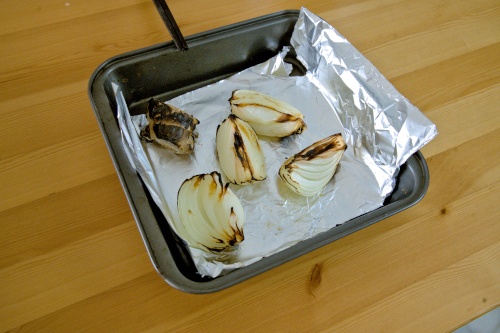
2. Roast the Spices
To enhance the flavor of the spices, heat a saucepan over medium heat and roast star anise, cinnamon sticks, green cardamom pods, cloves, and coriander seeds until fragrant, about 3-5 minutes. Once aromatic, transfer them to a small cloth bag for easy removal from the broth after simmering. Toasting the spices elevates the broth’s flavor significantly.
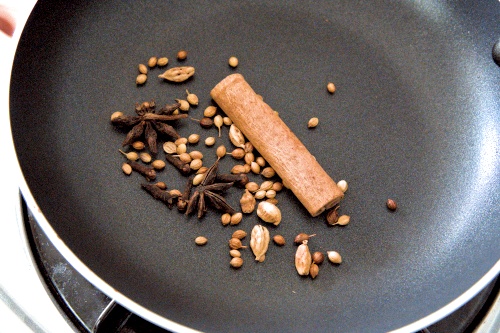
3. Pressure Cook All the Ingredients
The next step is to combine all the ingredients in the pressure cooker. I typically skip blanching the chicken, as I’m using pieces rather than a whole chicken, and I find it unnecessary for flavor and appearance. The pressure cooking method minimizes boiling, resulting in a clearer broth.
Simply place the chicken, spices, onion, and ginger into the pressure cooker, seasoning with rock sugar and salt. I prefer to add fish sauce later for better flavor balancing.
Lock the lid and set the pressure cooker for 20 minutes.
You can add MSG or chicken bouillon for extra flavor, but it’s optional. I prefer to enhance the broth with more fish sauce later.
Once the cooking time is complete and the pressure has released, carefully remove the drumsticks first to avoid breaking them. Then, season the broth with fish sauce and salt, adjusting with water if necessary.
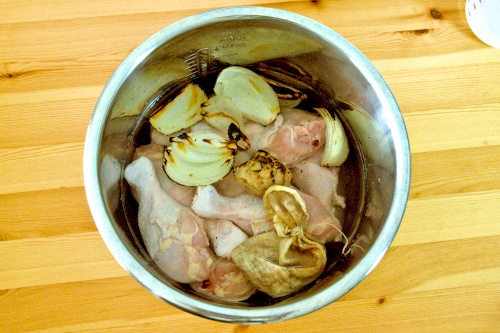
4. Strain the Broth
Remove all solid ingredients and strain the broth to achieve a clear liquid.
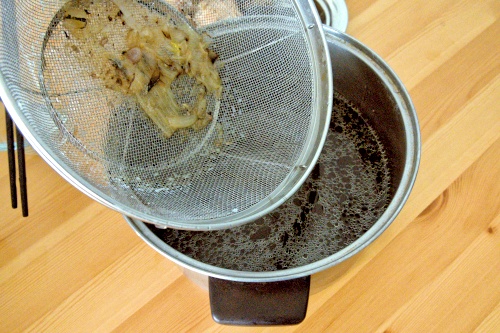
5. Blanch the Noodles
Prepare the noodles according to the package instructions. Soak them until soft, usually about 20 minutes, then blanch them in boiling water for 5 to 10 seconds before transferring to a serving bowl.
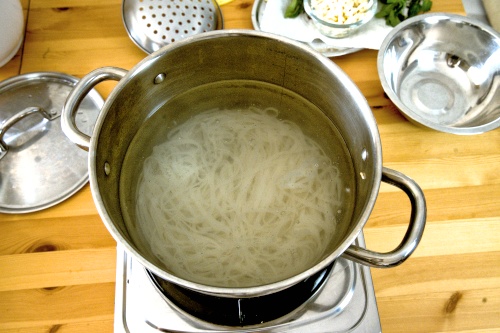
6. Prepare the Herbs
While the chicken is cooking, take the time to prep your herbs, bean sprouts, onions, green onions, and limes. I typically use Thai basil, bean sprouts, and green onions, and may add mint leaves if available. Some prefer their bean sprouts raw, while others blanch them briefly in boiling water.
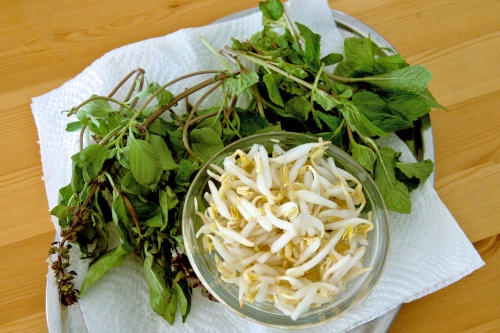
7. To Serve
- Cook the noodles in boiling water until al dente, following the package instructions. Place the noodles in a large bowl.
- Pour the hot broth over the noodles. Add the chicken meat and garnish with green onions and sliced red chili.
- Rinse the bean sprouts, Thai basil, and mint leaves. Cut a lime in half and serve it alongside the herbs with the hot bowl of noodles.
Note: For better presentation, serving the whole drumstick is recommended, but deboning it makes for easier eating. The choice is yours.
Why Use an Electric Pressure Cooker for Vietnamese Chicken Pho
Pressure cookers provide significant advantages when preparing pho broth. The high-pressure environment allows water to boil at a higher temperature, speeding up the cooking process. For example, a chicken leg can become tender in just 15 to 20 minutes, significantly reducing cooking time compared to traditional methods. Additionally, because the liquids in a pressure cooker do not boil at full pressure, you can achieve a clear broth without the need for skimming. These benefits make pressure cookers a time-saving and efficient choice for busy cooks.
The Difference Between Vietnamese Chicken and Beef Noodle Soup
While it’s true that beef pho tends to be more flavorful than chicken pho, I opted for chicken today due to the longer cooking time required for the beef version. This is why I haven’t prepared the beef variant in quite some time. The convenience and time-saving aspect of making chicken pho in a pressure cooker make it an appealing choice.
📜 Other Related Recipes to Vietnamese Chicken Noodle Soup
If you enjoyed this pressure cooker pho ga, you might also like other similar Asian noodle dishes. Here are some recommendations:
